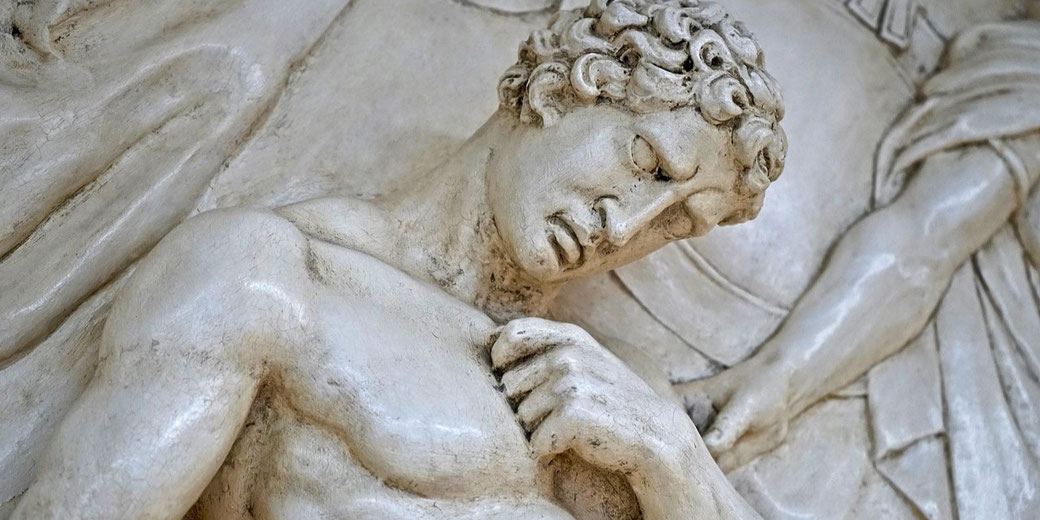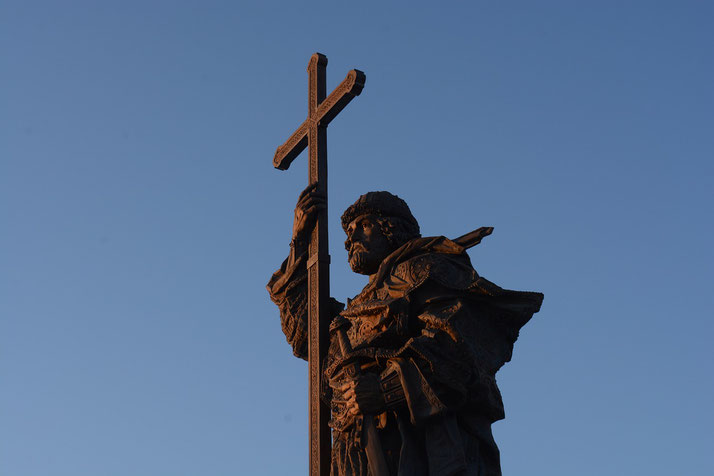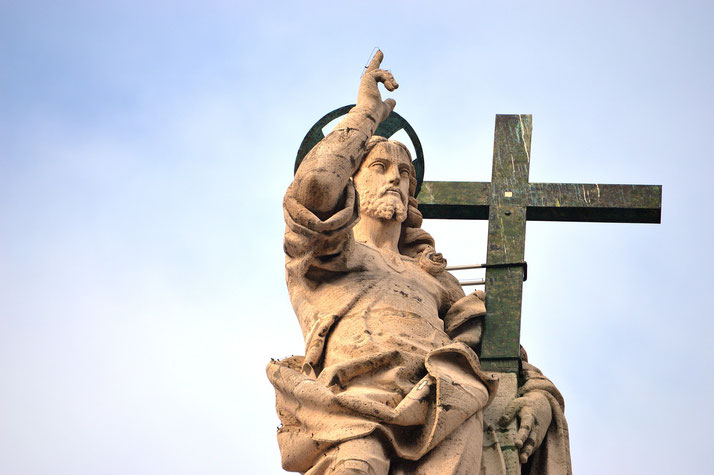Nero's reign of terror: how Christians became scapegoats for Rome's problems

Among the most horrifying crackdowns in Roman imperial history, Nero’s persecution of Christians is notorious for its extreme brutality and public display of deliberate cruelty.
Sparked by the Great Fire of AD 64, which destroyed wide sections of Rome and ignited suspicion against the emperor himself, the campaign effectively turned a small, misunderstood religious group into public enemies.
Through public executions staged with showy cruelty and meant to blame Christians, Nero transformed Rome’s internal crisis into a war against faith.
Growth of early Christianity
Christianity began within the Jewish communities of Judea in the early first century AD and initially grew slowly as followers of Jesus of Nazareth, who spread his teachings to regions across parts of the Roman Empire.
Jesus was executed by Roman authority under Pontius Pilate around AD 30 and had gathered disciples whose devotion continued after his death and led them to preach his message across synagogues and cities throughout the eastern Mediterranean.
Within a few decades, Christian groups likely formed in some urban centres such as Antioch, Ephesus, and possibly Alexandria, though scholars still debate the evidence for the latter.
Over time, Christianity began to appeal to both Jews and Gentiles. It promised personal salvation and eternal life through adherence to the teachings of Jesus.
Paul of Tarsus, who combined his background in Jewish law with Roman citizenship, helped spread the religion through missionary journeys across Asia Minor, Greece, and eventually to Rome itself.
To support these missions, he wrote carefully structured letters to Christian communities in Corinth, Galatia, Philippi, and other cities, encouraging unity and moral discipline that helped them endure pressure.
At the same time, Peter became a leader of the Jerusalem church and later strengthened the movement’s base in Rome.
For worship, early Christians gathered in private homes where they read scripture, prayed together, and shared ritual meals.
As a result of their private meetings and refusal to take part in civic festivals, Roman officials began to view them with suspicion, as public religion in Rome depended on visible ritual participation, and anyone who refused was considered dangerous to the state’s wellbeing.
Even when Christians lived peacefully, their rejection of Roman gods made them stand out as 'disloyal'.
By the middle of the first century, their numbers in Rome may have reached several hundred or more, though estimates are uncertain and difficult to verify.

Why did Nero target Christians?
After the fire had torn through Rome in July of AD 64, ten of the city’s fourteen districts were damaged and thousands were left homeless.
The fire began near the Circus Maximus on the night of July 18 and burned for six days before reigniting and lasting a total of nine.
Three districts were completely destroyed, and another seven were severely damaged.
Nero’s efforts to rebuild the city and provide relief had included opening his private gardens to the displaced, arranging for grain to be sold at reduced prices, and planning new construction projects, notably his personal palace the Domus Aurea, so many Romans grew suspicious that the emperor himself had ordered the fire to make room for these grand designs.
Anger spread as the poor suffered and rumours grew louder.
To remove suspicion, Nero accused the Christians of starting the fire because he apparently relied on public prejudice, knowing that many had already distrusted this secretive religious group.
As mentioned above, Christians refused to worship traditional gods, declined to join state festivals, and met in private.
For Roman citizens, this behaviour violated long-held religious expectations that connected loyalty to the gods with the safety of the community.
As a result, many people believed the Christians had invited divine punishment on the city.
By shifting blame to a disliked minority, Nero attempted to protect his reputation and appear as a defender of Roman values.
His officials presented the arrests as part of a legal process, although no formal legal precedent or established policy existed for such action at the time.
Within Roman thought, pietas, respect for the gods and for family, shown through customary rites, largely formed the backbone of civic responsibility.
Those who rejected it were viewed as enemies of order, so Nero framed the Christians as a godless and rebellious sect who deserved elimination.
Their growing presence in a city still recovering from disaster made them a convenient and believable target.
Nero's cruel punishments for Christians
To reinforce his claim and discourage sympathy, Nero staged a campaign of terror that shocked even hardened Roman spectators.
Victims were often paraded in public, tied to stakes, or disguised in animal skins and thrown to wild dogs.
Others were crucified or drenched in pitch and set alight to illuminate Nero’s gardens during evening feasts.
According to certain ancient accounts, the executions were given theatrical elements, with victims dressed as mythological figures in scenes that mimicked tragic plays.
At first, crowds treated the executions as entertainment and they gathered in large venues like the Circus Maximus, where Christian prisoners were often made to die during public games or dramatic displays.
Announcers claimed the deaths would restore divine favour to the city and cleanse it of spiritual corruption.
Over time, however, some writers expressed unease. Tacitus, who wrote decades later in his Annals 15.44, observed that many had by then distrusted the Christians, yet the cruelty of the punishments seemed excessive and prompted pity, for it appeared motivated by the cruelty of one man rather than by public welfare.
As executions continued, stories of Christian victims who remained calm under torture began to circulate widely, so new followers viewed their suffering as proof of moral strength.
Their deaths were interpreted as acts of witness, which eventually gave rise to the early Christian concept of martyrdom.
For many believers, martyrdom became the highest expression of faith.
The deaths of the apostles Peter and Paul
Among those arrested during Nero’s campaign were two of the most influential Christian leaders.
According to early Church tradition and later writings such as those of Eusebius, both Peter and Paul died in Rome during the same wave of repression.
Peter was regarded as the senior figure in the Roman Christian community and was reportedly crucified upside down, a tradition that appears in later Christian sources and suggested that he was unworthy to die in the same manner as Jesus.
Paul had Roman citizenship and was said to have been beheaded, possibly along the road to Ostia, though the precise location remains uncertain.
Their deaths became foundational to Christian identity because followers viewed their final acts as fulfilments of earlier teachings, which had warned of trials and suffering for believers.
Before his death, Paul had already urged Christians to endure hardship with dignity, while Peter had advised the faithful to remain steadfast even when faced with persecution.
Eventually, the places associated with their deaths acquired spiritual meaning.
Christians had by then built shrines on the sites where tradition claimed they had been buried, and centuries later Saint Peter’s Basilica and the Basilica of Saint Paul Outside the Walls were built to honour them.
These locations became places of pilgrimage, and their martyrdom inspired others to hold firm under future waves of repression.
What impact did the persecution have?
Nero’s campaign did not destroy Christianity, as it largely gave the movement new resolve.
Survivors of the persecution carried their experiences with them to other cities, where stories of courage and sacrifice often encouraged new conversions.
Among Christians, the memory of Nero became a warning. He came to symbolise what many Christians described as spiritual evil.
Soon after Nero’s death in AD 68, civil war broke out across the empire. Roman historians who recorded his reign, such as Suetonius and Cassius Dio, condemned his excesses and eccentricities.
Christian writers went further, as some interpreted him as the apocalyptic Beast or Antichrist figure described in the biblical book of Revelation, and they believed that his return would herald a final battle against the faithful.
Over the next two centuries, other emperors periodically launched fresh persecutions, but Christians who refused to sacrifice to the emperor or the gods were arrested, imprisoned, and executed.
Yet the Church continued to grow steadily. Every wave of repression had often created more stories of martyrs, who became role models of bravery and purity, so these stories strengthened Christian identity and gave meaning to suffering.
Eventually, for many Christian communities, memory of Nero’s persecution became more than just a tragedy.
For many believers, it led to a new understanding of faith as something worth dying for.
His attempt to silence the religion had the opposite effect, as he effectively turned Christian suffering into a permanent part of Rome’s historical and spiritual record.

What do you need help with?
Download ready-to-use digital learning resources
Copyright © History Skills 2014-2025.
Contact via email
With the exception of links to external sites, some historical sources and extracts from specific publications, all content on this website is copyrighted by History Skills. This content may not be copied, republished or redistributed without written permission from the website creator. Please use the Contact page to obtain relevant permission.





